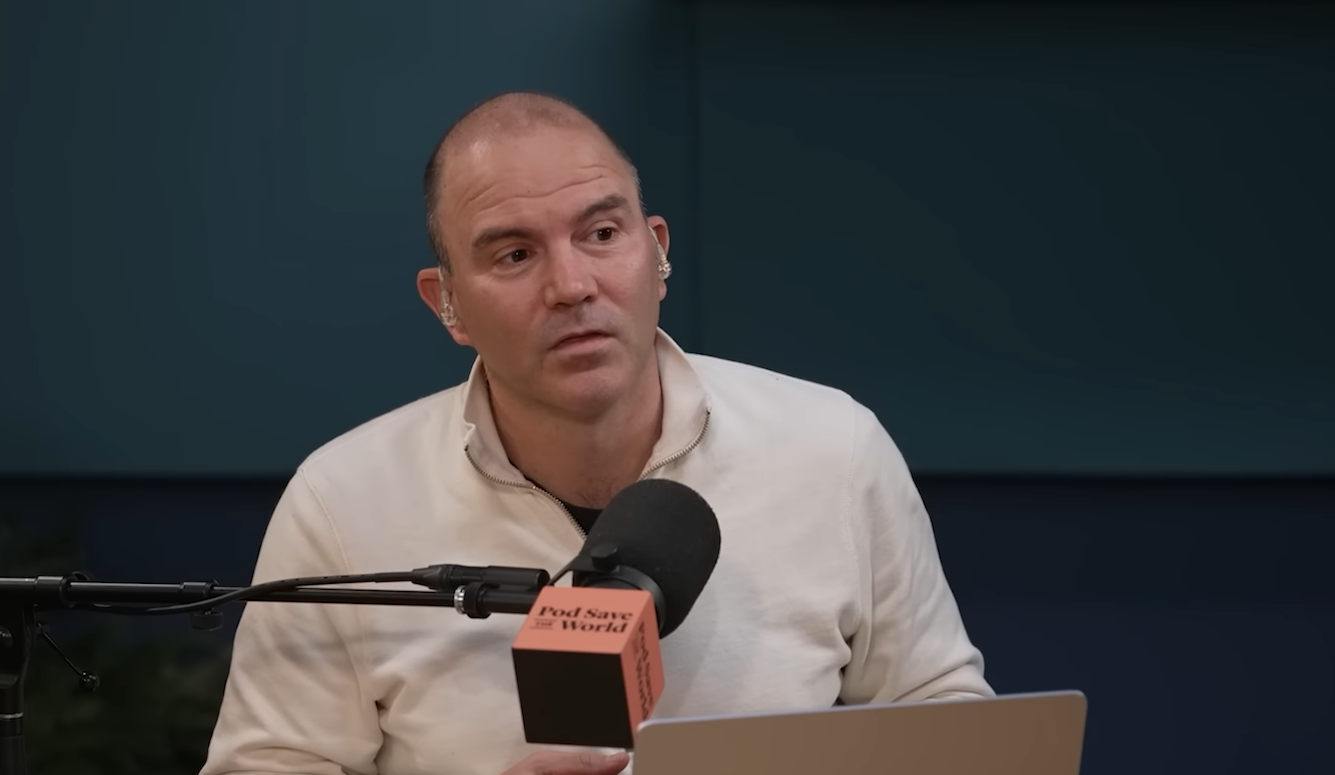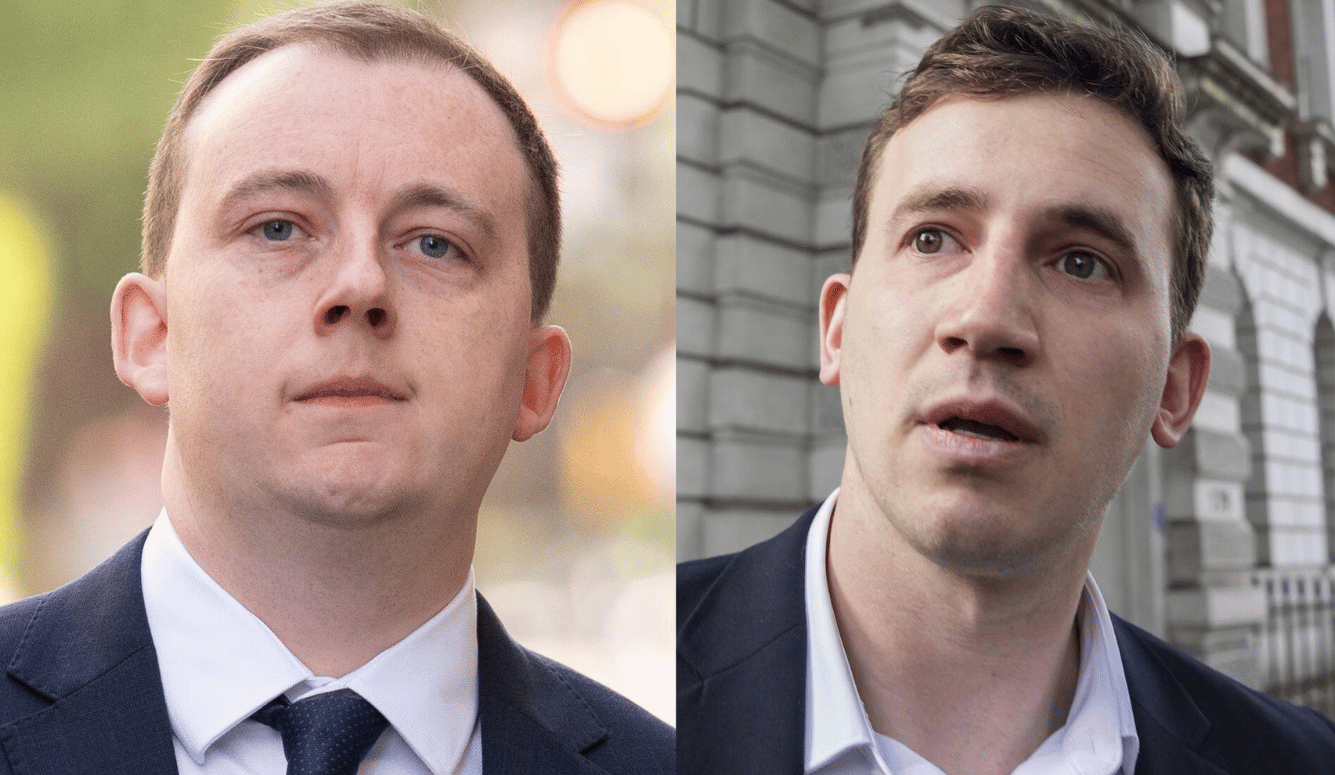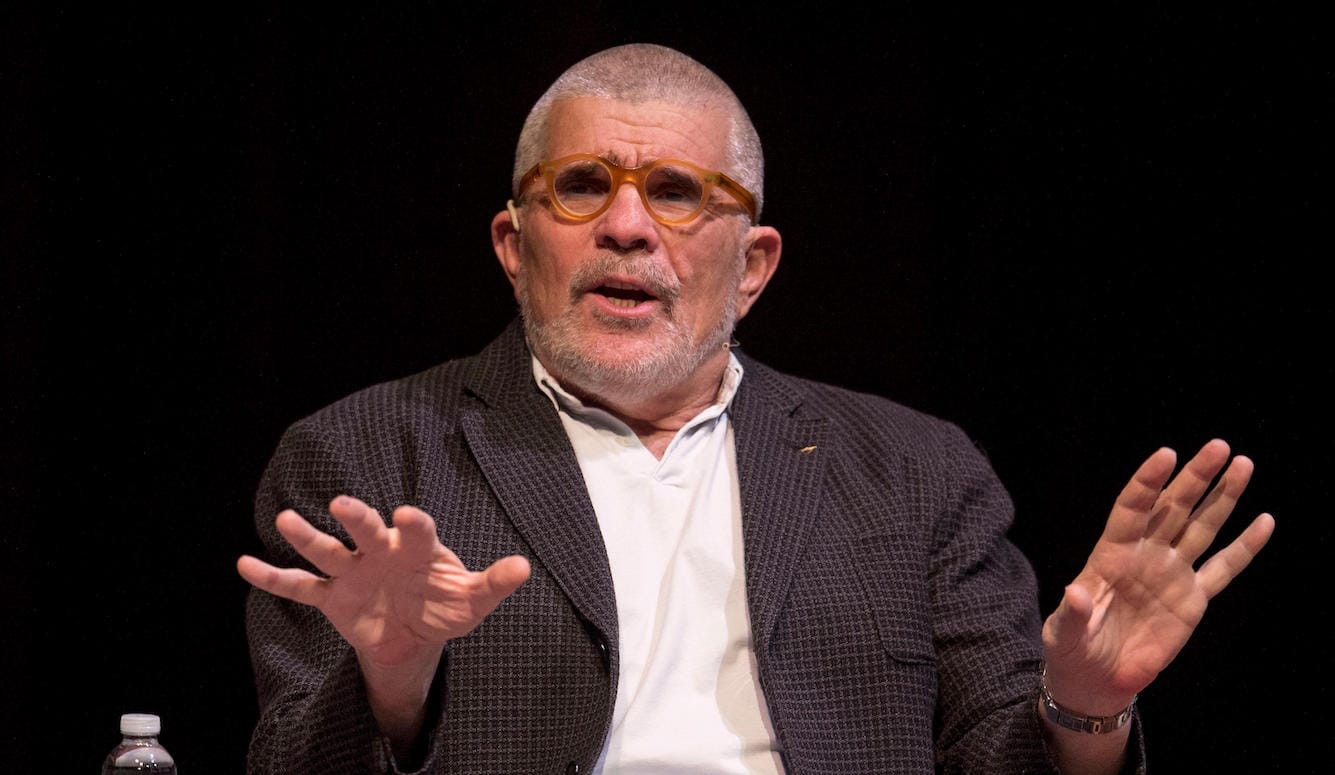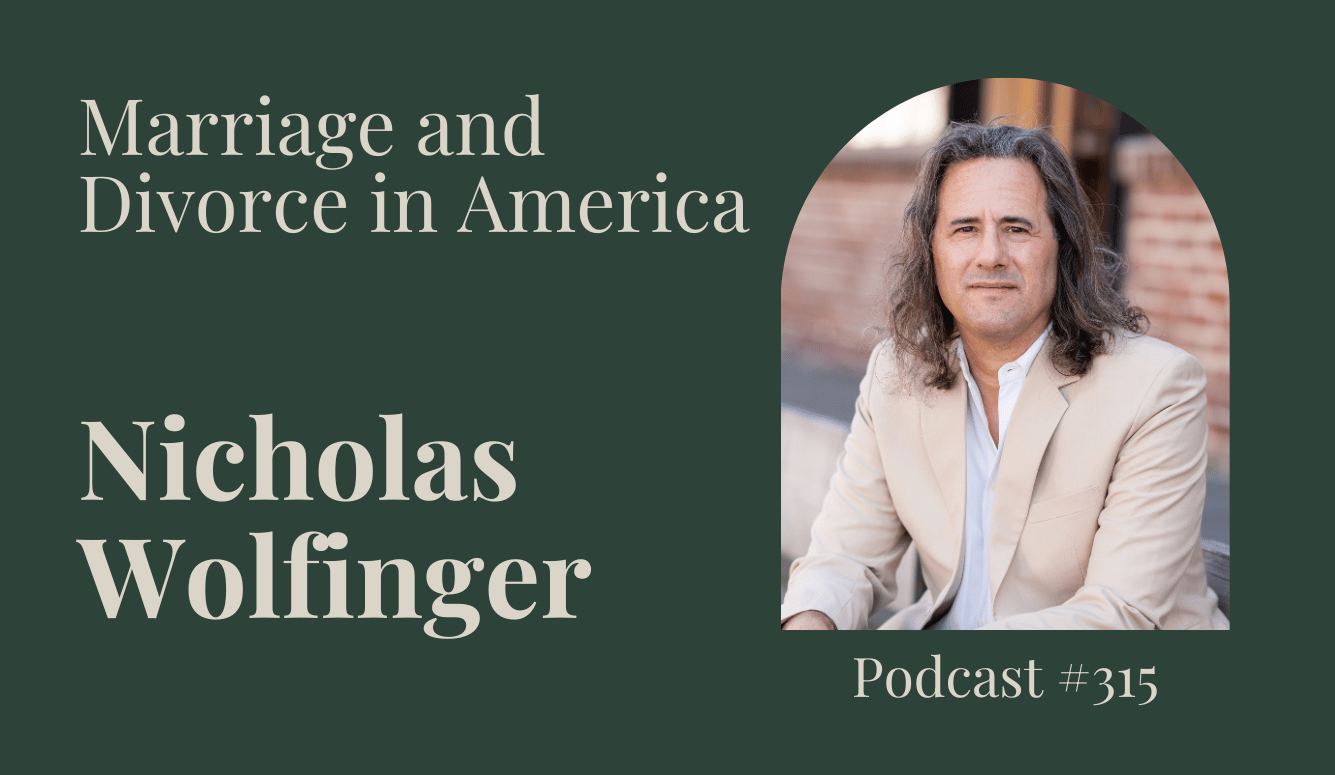Crime
Quillette Podcast #308: Machetes in Melbourne
Managing Editor Iona Italia talks to criminal justice researcher Andrew Bushnell about the many causes of the recent surge in crime in Melbourne.
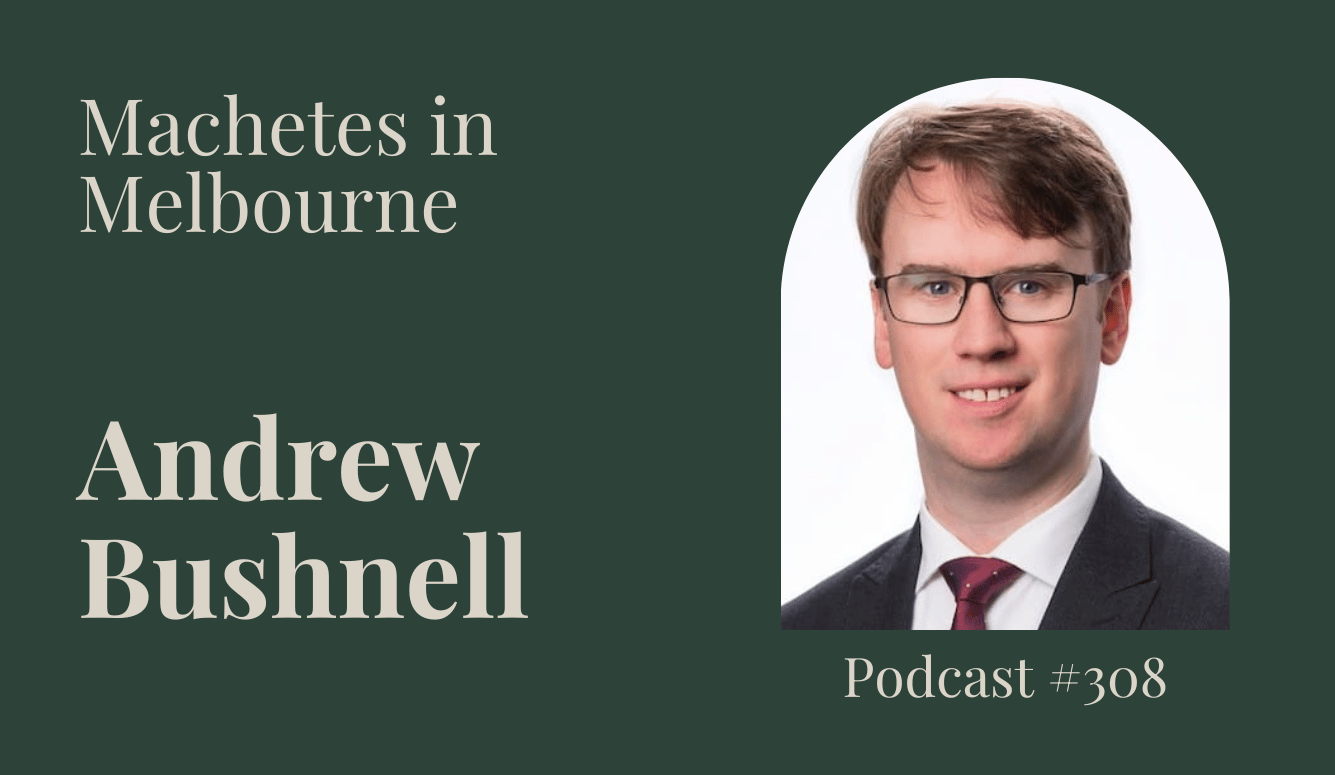
Introduction: Welcome to the Quillette Podcast. I’ll be your host this week, Iona Italia. My guest this week is Andrew Bushnell. He is a researcher from Melbourne who has written widely on criminal justice and holds a PhD in political philosophy from the University of Melbourne.
I’m going to be talking to Andrew about the recent Melbourne crime wave. My starting point will be an article recently published in Quillette on 11th October 2025, titled The Melbourne Crimewave.
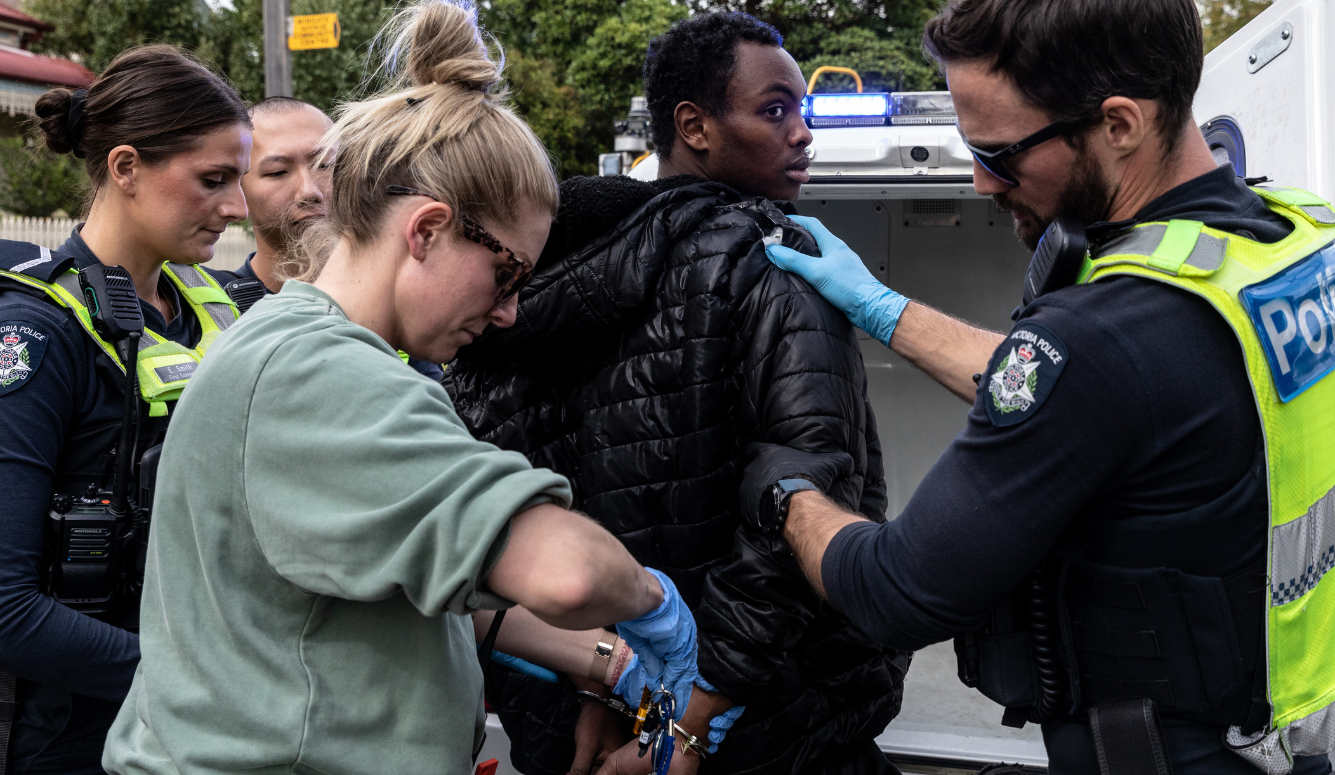
I hope you enjoy my conversation with Andrew Bushnell.
Transcript
The following transcript has been lightly edited for readability.
Iona Italia: Welcome, Andrew.
Andrew Bushnell: Thank you for having me. I’m really sorry about the difficulties.
II: No, don’t worry—you’re here now. So could you begin by running our listeners—especially those not in Australia—through what has been happening in Melbourne and why we are even running a feature article about a Melbourne crime wave? What is the situation?
AB: Yeah. The point that I really wanted to get across in the piece was that Victoria has seen a real surge in crime across a range of important categories—assault, robbery, breaking and entering. And within that context, there’s been a series of what could only really be called spectacular crimes: a rise in machete-related violence, kids fighting in the street, carjackings. It’s basically got to the point where it’s every day now in Melbourne.
In fact, just yesterday—or the day before—a judge in Victoria decided to bail three youths who had been fighting with machetes out the front of a theme park near the beach here. And it’s basically every day that there’s a story like this.
The broader context is that it’s really unusual in the history of Melbourne to have such spectacular crimes and for Melbourne to be associated with crime—certainly over the last thirty years. Melbourne has a hard-won reputation as one of the most liveable, nicest places to live in the world. So to see a surge in violent and property crimes has really been alarming for everyone.
I say “everyone,” but the political situation is that it doesn’t seem to have been too alarming for the government—at least not until it started to jeopardise their electoral prospects. One of the main contributors to this phenomenon has been changes in their policies around things like bail. So I think that’s broadly the situation.
II: So when you say there’s something every day, just for context, remind me what the population is of Melbourne?
AB: Melbourne is now—by some counts at least—the biggest city in Australia. It’s more than five million people. It’s significantly bigger than it used to be twenty years ago. The population has risen from about three million, driven by sustained immigration.
So it’s gone from being a sort of mid-sized, albeit extremely rich, provincial city of the world to being much closer to a large city—by standards people overseas might consider to be large. And of course, it’s an extremely important city in Australia. Historically, the home of the nation’s wealth and finance. Sydney is probably the more famous city, but Melbourne—
II:—and definitely the superior city. I’m sorry. We might end up in a machete fight over this.
AB: Well… ordinarily I’d be as parochial as they come, but given the topic and the present circumstances, it’s very hard to defend Melbourne.
But historically, Melbourne has been a fabulously wealthy place since the mid-19th century and a very important port city in the southern hemisphere. So to see its decline now has really been alarming for anyone of a conservative disposition who grew up here.
II: Let’s start with the policies. Because there hasn’t been a similar rise in crime in either New South Wales or Queensland, according to what you write in the article—and certainly not these types of violent crimes like carjackings, burglaries, break-ins, machete fights. We have not seen a similar rise. Why has Melbourne’s crime rate risen so much more than that of other states in Australia? What’s going on specifically in Melbourne?
AB: I think the main driver—and certainly the one that opponents of the government would point to—would be changes to bail laws. There was a deliberate weakening of bail laws a few years ago, but that has subsequently been reversed.
Interestingly, the uptick in crime begins prior to the weakening of the bail laws themselves. And subsequent to the recent reversal of that policy, we’ve already seen a rise in the unsentenced prison population—that is, people being remanded.
There’s a larger context around bail which I tried to explore in the piece—namely, the practice of the judiciary in granting bail. Now, it’s a default setting around the country that, when it comes to youth offenders, remand—and actually incarceration, even when sentenced—is considered a last resort. Authorities do everything they can to keep young people out of prison, with the hope that they can be reformed. And that’s not entirely unreasonable, of course.
But here in Victoria, you have habitual offenders—including youth offenders—with long histories and a series of crimes they’ve been accused of or convicted of, who continue to get bail. Which means they stay out on the street and can commit more crimes. That’s been one of the main drivers.
The other underlying cause, when we talk about youth offending and the gang element, is—again, it’s a somewhat uncomfortable point—but there is an ethnic element to that, related to the growing population of the city.
Specifically, in recent cases involving these machete-related crimes, it’s often associated with African gangs. And more broadly, the growth of the city has meant densification. There have been significant efforts by the government to change the way the population is housed. The Minister for Housing at the federal level—who’s also from the Labor Party that dominates Victorian politics—is actually my local member. She was talking just yesterday about the need for the eastern and southern suburbs of Melbourne to absorb more of the population growth through densification.
This is relevant because when you look at the rise in crime, some of the largest increases have been seen in these same areas. Part of that is due to shopping precincts—so people come into these areas—and one of the main categories of increased crime is theft from motor vehicles.
II: By theft from motor vehicles—I wasn’t quite sure what that meant. Do you mean they drive up there and someone jumps out of the car, commits the crime, and then jumps back in?
AB: No, no, good question. “Theft from motor vehicles” means breaking into a car and stealing things from it. One of the things that’s almost amusing about this is that historically, we’d associate that sort of thing with Hollywood films from the 1980s. If you watch Robocop or something—someone’s breaking into a car to steal the radio or stereo. We would never have associated that with Melbourne—much less carjackings.
We now have stories of carjackings happening in wealthier suburbs where those sorts of cars are found. So the crime is coming into the nicer suburbs.
In the same way, the “nice” suburbs—the term might be a bit parochial—are changing. You’ve already seen this play out politically. The Liberal Party, which is the main opposition to the Labor Party, has basically been chased out of the suburbs here in Melbourne. Part of that is that the ground has shifted underneath them.
The sorts of people who live in areas that traditionally voted Liberal are somewhat different than they used to be. And that’s not all external migration, of course. But—
II: I’m going to footnote this for our American listeners: the Liberal Party is the right-of-centre party in Australia, and the governing, left-of-centre party is the Labor Party—which, for some reason unbeknownst to me, is spelled without a “u”: L-A-B-O-R.
AB: Well, that’s actually a deliberate American spelling from an era in which the United States was considered the more progressive option. The Labor Party in the late 19th century styled itself that way to associate itself with that wave of progressivism.
Just as an aside: calling the Liberal Party “centre-right” is very much a relative term. I think anyone from America who came here would be aghast at what we consider to be conservative politics in this country. And that is actually part of the problem.
When we get into the politics of this trend and why the response to it has perhaps been ineffective, it’s been very hard for the Liberal Party to come up with something more than just a message—more than just pointing at the problem and saying it’s a problem. It’s been very hard for them to develop a coherent policy response, in part because of underlying confusions about what the liberals and the conservatives within the party actually want to do.
II: Yes, the densification is obviously necessary because I’ve just seen the list of the ten most unaffordable cities on earth. Sydney comes in at number two—after Hong Kong narrowly beat us to the top slot. And there are five Australian cities in the top ten most unaffordable, in terms of house prices and rental prices compared to average incomes. Melbourne is certainly in there—slot four or five, I think.
AB: Yeah, that’s right. The city is now ringed by these very large, underserviced developments. One alternative to that is, of course, bulldozing nice suburbs to put up high-rise apartments. Another alternative would be to turn off the population growth—which is apparently something that lies beyond the Overton window of Australian politics.
It’s an interesting phenomenon here in Melbourne that the proposal for densifying has had the political effect of changing the mix of renters and homeowners, but also seems to be happening at the same time as increased crime in those areas. In part, that’s through foot traffic or traffic coming through.
AB: There’s this broader question about the changing nature of the city. These could be considered growing pains as these areas change.
The point I’d stress about that is: if you look at these suburbs, they’ve historically had very low rates of crime. And even now—even with this surge—by world standards, we’re not talking about extremely high rates. What we are talking about is a qualitative difference: the types of crime being committed have changed.
And it’s not really an excuse to say, as the government does, “Well, we’re coming off a very high base—we’ve always had very low crime.” We ought to maintain those standards. We ought to maintain the quality of life in these suburbs. It’s not as simple as saying, “We’ll build more houses where people want to live.” That’s true, but why do they want to live there? It’s a question of amenity. And crime is, of course, a big part of a place’s amenity.
II: Yes, in the article, and I think you’ve said this elsewhere—I was listening to a recent speech of yours—you say that keeping crime under control is one of the most basic things we expect governments to do. And you also said, and I thought this was interesting, that when you’re dealing with crime, you need to differentiate clearly between people who scare us and people we’re just angry with.
People we’re just angry with can maybe be bailed, given non-custodial sentences, or sentenced to community service. But people we’re actually scared of should be in prison. Is that a fair representation?
AB: Yes, sort of. When I used to work on criminal justice reform, one of the main lines was that we need to distinguish between those we’re mad at and those we’re afraid of. The basic impetus for criminal justice reform is about rationalising the system towards community safety.
The question is: are we getting value for money? Are we getting what we think we’re buying when we invest in prisons, police, and the mix of punishments?
I always used to say that being tough on crime means actually doing the things it takes to reduce crime—versus simply being tough on criminals. Though I suppose that last point may not always be quite so neat.
The point I wanted to make in the article is that what we’ve seen in Victoria isn’t really a rationalisation along those lines. There are fewer people in absolute terms in prison for crimes like assault, breaking and entering, and robbery now than there were six or seven years ago—despite the growth of the city. So, in absolute terms, there are simply fewer people in prison for these kinds of crimes, even though we know that the victimisation rates for those crimes are up in Victoria. There are more victims, but fewer people going to prison.
These are crimes we ought to be afraid of. And I think one of the ways to understand what’s happened in Victoria—which is, in a way, a reduction of the prison population—is to see it as not a careful reform, but an indiscriminate reduction. At one point two years ago, Victoria had the lowest incarceration rate in the country, and it still has the lowest among the mainland states of Australia.
It hasn’t been the kind of rationalisation you might hope for.
The other ideas that we used to promote as part of criminal justice reform—strengthening alternative punishments, making community corrections work, ensuring people actually serve the full term of their non-custodial sentences—those things haven’t really happened.
So, all you’ve had is an indiscriminate reduction in the prison population. And of course, if all you care about is the number of people in prison, well—we always said this—you can just let people out. And that’s what has happened.
It’s a shame—not just because of the crime—but also because of the discrediting effect that has on more serious types of reform that might actually improve community safety.
II: So why are people who’ve been convicted of violent crimes being bailed and let out of prison? What’s the motivation behind that? What are the incentives that are causing that to happen?
AB: Well, my view—and again, this is informed by having worked in this space—is that ideologically speaking, the Left broadly, and certainly this government in Victoria, doesn’t really care about community safety. Even setting aside the cost arguments—which, as I’ve mentioned, they also don’t care about—there’s no strong concern with public safety.
What they care about is this amorphous sense of fairness towards the criminal. They want to shift the blame for crime from the criminal to society itself. The idea is that crime is a manifestation of alienation or disadvantage.
Now of course, there are material drivers of crime. For example, if you look at services for homeless people, Victoria has by far the highest rate of people trying to access those services. So it’s not as though material conditions don’t matter.
But ideologically speaking, there’s an aversion to pragmatic reform and a desire to fold criminal justice into a larger project of social justice or equity or redistribution. I’d say that’s the core of it.
I say that because I’ve spoken directly to people who work in this field. When I was trying to make pragmatic arguments—saying, for example, that politically speaking, they need voices like mine—I was told, quite bluntly, “We don’t need the Herald Sun,” which is the major tabloid here in Victoria. That was symbolic. What they meant was: we don’t need conservative voices, we don’t need pragmatism—we’re just going to do it.
And I think that’s what has happened, really. All the arguments about cost, about ineffectiveness, about different ways to punish people, about rationalising who gets punished and how—they’ve all fallen on deaf ears because the real impetus is simply against the idea of rendering justice through the criminal justice system.
Just to finish that thought—there’s a perverse aspect to this. If you think about what criminal justice is—what the criminal law is—it’s distinguished by its public aspect. If I wrong you privately—if I flood your farm inadvertently while building a dam on mine—then that’s a civil matter between us.
But crime is important because it offends not just the victim but the public at large. And yet that public aspect is now being turned on its head. It’s now treated, in effect, as an excuse for crime, rather than the thing that makes crime so serious.
And when you consider that the most basic function of the state is to keep the peace—to provide a civilised platform for people to live their lives and interact under the rule of law—it becomes clear just how perverse this approach is.
In the piece, I also pointed to other indications of why I think this is part of a larger ideological project.
II: Yes, I’ve been radicalised on this, basically by seeing the stats on how many violent crimes are committed by repeat offenders. If people who’ve committed three or four violent crimes were simply incarcerated, so many terrible things wouldn’t happen.
Almost all the most horrific crimes you see—so often, it turns out the perpetrator had multiple prior convictions. So there’s a kind of extreme Pareto effect at work here. You can afford to be pretty tough on a very small number of people and have a massive effect on the peacefulness of society. Am I correct in that assumption?
AB: Yes. There’s a claim—or a study, rather—that suggests that in Victoria, about forty percent of the crime is committed by roughly 5,000 habitual offenders.
So yes, as you say, there’s a power law here. And the return on investment for simply removing these people from society would probably pay off.
That’s the unique function of prison—to incapacitate people, to take them out of circulation. Libertarians are right to say that depriving someone of their liberty is a severe punishment and shouldn’t be done lightly. And I think we sometimes underplay just how severe a punishment it really is.
For anyone who enjoys their freedom and likes to walk freely in the world, it’s pretty easy to understand how tough that is. It’s also hard to reconcile with the idea of rehabilitation. Prisons are not really environments for rehabilitation. You can try to make them that way, but ultimately, prisons are about taking people out of circulation.
And that’s how we need to assess the trade-off. What does society get from this? How badly does it affect the person? How severe a punishment do they deserve?
AB:
So, I think all of that is really a matter of prudential judgement. But certainly in Victoria, it seems we’ve tipped towards multiple second chances being the policy. And there has to be a point at which you just say: we actually know who the criminals are. We know where they operate.
That was another point I made in the piece—about targeting police resources. We should be trying, in various ways, to disrupt known criminals and incapacitate them.
II: Yes. Can we talk a bit about the changing demographics of crime?
One thing I wanted to ask you was whether, in Australia, they collect crime statistics by ethnicity—or whether it’s simply by birthplace and citizenship, which could be misleading. And is it even legal to record crimes by ethnicity?
And also, do you feel there is a racial or ethnic element to these crimes? You mentioned young Sudanese men being involved in gangs earlier. Has the criminal demographic shifted since the days of Chopper and people like that?
AB: Yes. The answer to your first question is: I think it is legal, if you wanted to do a study that examined ethnicity, but it’s not recorded that way in the official statistics. What’s recorded is country of birth. And of course, many people from different ethnic backgrounds are born in Australia, so that doesn’t necessarily tell you very much.
In particular, given the changes over the last twenty years, the time series is definitely broken.
One thing I found interesting when I was researching youth offenders is the rise in the number of offenders whose country of birth is simply not recorded. And under the law here in Victoria, the police don’t have to record it—so increasingly, it’s not being recorded.
Now, it’s not as simple as just saying, “Well, I’ll be reasonable and not jump to the conclusion that they’re trying to hide something.” But an equally reasonable person might look at that and say: isn’t it interesting that this information suddenly becomes so much harder to obtain?
That’s true across Australia. What’s recorded is country of birth. The Australian-born share of offenders seems to have declined in Victoria, certainly.
That said—and I can already hear the rebuttal from some people—that there was more crime recorded in Australia in the early 1990s and basically throughout the ’90s than there is now.
So, if you want to point to more recent demographic shifts as a cause, it might not be that simple. Although I’ll say that the way theft and similar crimes have been recorded over time has changed, so it can be quite hard to get a handle on.
As I mentioned earlier, if you look at victimisation numbers and even recorded offender rates, Victoria is now pushing back up towards those historical highs. The trend is definitely heading in that direction.
So, at the very least, it’s an unavoidable correlation that—as the city has undergone a very large and dramatic demographic shift, as well as a large economic shift—the incidence of crime has increased.
Melbourne, for example, is home to all kinds of international students and so on. So as those changes have taken place, we’ve seen crime increase.
But I think there’s one step in between, which is that we’ve had a government that has looked at those shifts—those underlying material changes—and, instead of responding one way, has chosen to respond ideologically. They’ve applied a sort of ideological frame onto the situation and made things worse.
And that frame is not just judicial. The judiciary has been stacked—Labor has been in power here for 20 of the last 24 years, or 25 years really, since 1999. So most of the judges have been picked by Labor attorneys-general, and that’s certainly part of it.
But it’s more than that. The government itself is motivated by a left-wing ideology that would be familiar to people around the world. It’s heavily coordinated internationally now—things like land acknowledgments seem to pop up in every jurisdiction in the English-speaking world at the same time.
So, for anyone watching this from outside Victoria, the top-level message is: this government is exactly what you’d expect. If you’ve encountered radical left-wing governments on the West Coast of the United States, or the current mob in London—it’s exactly what you would expect. It permeates everything they do, and criminal justice is just the most visible evidence of it. It’s like smoke. It’s the thing you see when you know a place is in trouble.
II: Yes. I’m always very concerned about failures to record things. I understand the motivation. In some countries, it’s illegal to record race, ethnicity, birthplace, and so on in relation to crime. And there’s a concern about info hazards—that if you publish data showing that, say, young Sudanese men are committing a high proportion of crimes, then people will become suspicious of all young Sudanese men. That could increase tensions within the community, even lead to racism or discrimination.
So I understand that info hazard argument. But ultimately, I think it’s mistaken. It’s always useful to have as much information as possible. Your bottom-line aim should be to prevent crime and keep people safe—not to be politically correct in what you say.
You have to begin by looking at the truth. Then you can worry about how people might interpret it. But you can’t start by censoring what’s true. I think that was one of the big problems in the UK with the grooming gangs scandal—a failure to record things accurately out of fear about how that data would be perceived.
It’s important to begin by understanding how things are.
AB: Yes, I think that’s right. It’s certainly unobjectionable to try and get an accurate picture of what’s really going on.
One way to say that—and not to be cowed by the charge of racism—is simply to look at the hook for the piece I wrote. It was two young African-background children who were hacked to death in the street. That shouldn’t happen in Melbourne. Regardless of your ethnic background, that sort of crime never used to happen here—and it shouldn’t.
That should be our starting point.
I think I snuck this into the piece: a line I’ve always used and liked—“targeted policing should be considered needs-based policing.”
II: I was just about to say that—I really liked that phrase.
AB: Because the victims of these crimes are very often from similar ethnic backgrounds. And if we take seriously the idea that the law should protect everyone, then we need to be realistic about this.
If we know there’s a gang problem in certain communities, then we need to invest in policing resources—and yes, in prisons—to incapacitate those offenders. And we should do so proudly. Because that is the basic function of the state: to protect people’s ability to go about their lives peacefully.
In the end, I think I said in the piece that it’s an uncomfortable fact. And it is—because the upstream cause is immigration policy, which could be changed. And that’s the bit that makes people uncomfortable.
We tend to talk about population growth and demographic change as if they’re inevitable—like a tidal wave. But actually, my old boss at the IPA [Institute of Public Affairs], John Roskam, had a piece last week taking issue with the term crime wave, because it makes it sound like something natural, something that just washes over you.
And he’s right. It’s true not just of crime but of all aspects of public policy—including the demographic changes we’re seeing in Melbourne. These aren’t inevitabilities. They’re the result of choices. So if we don’t like the direction the city is heading, and we think about what’s really driving that change, then it becomes politically contentious very quickly.
And that’s when it gets difficult—because if you follow the thread all the way back to its source, you wind up in a much bigger conversation. That’s why I think there’s such caution. But at a minimum, we should be able to treat policing in a pragmatic way: identifying where crime is happening, who’s committing it, and where police resources ought to be targeted.
That should be less controversial. But instead, it gets wrapped up in this broader question of who’s coming to live in Melbourne and why, and whether that change—quite apart from criminal justice—is actually good for the population.
And I think that’s the concern: that if you raise the issue of ethnicity in crime statistics, or if you talk about demographic shifts in a candid way, then you’re going to get drawn into that larger debate. And certainly, for the state government here, that’s a reason to avoid engaging at all. I suspect that’s also why the opposition doesn’t want to pull at that thread too much—because a state government can’t change federal immigration policy anyway. That has to be done at the Commonwealth level.
So instead, we’ve had this narrower discussion about bail laws and sentencing, rather than using the issue as a wedge into the ruling party’s ideology and what else they might have in store for us.
II: I had a couple of points I wanted to make. The first, returning to the idea of needs-based policing, is that during the fervour following George Floyd in America and the “defund the police” movement, I noticed again and again that it was disproportionately people from wealthier neighbourhoods—often white Americans—who were supporting the idea.
But whenever they polled African Americans, African Americans were overwhelmingly against defunding the police. And I think that’s because many live in high-crime areas and actually want the police presence.
So that idea of needs-based policing makes intuitive sense to me.
On the wider topic of immigration—and I’m not an expert here—but we are facing a catastrophic global decline in fertility, and it’s going to hit Australia particularly hard and relatively early. We have an ageing population. So there’s really no getting around the need for immigration to keep the economy and workforce going, at least until we find some new model of wealth generation that doesn’t rely on youthful bodies and a large working-age population.
That said, I think there could be more acknowledgement of the fact that Australia is an extremely desirable place to live—the most desirable, in fact. And I don’t mean that just as a personal opinion. Statistically, Australia is the only country with net positive immigration from every other country—including the United States. More Americans immigrate here than Australians move to the US.
So Australia can afford to be choosy. And we also have the problem of being a very unaffordable country. So we need to ensure we’re not flooding the place with new arrivals at a rate that makes housing even less accessible.
Those are the two points I wanted to make. Australia can be choosy about who comes in. And we need to be mindful of how immigration policy affects affordability and livability.
AB: Yes, I think that’s right. It’s a good point about affordability. A lot of people would challenge the direction of causation between low fertility and affordability. If we really cared about increasing fertility among the existing population, then we might take steps to make family life more affordable—make it easier to access a home, to raise children.
II: That might help. It won’t solve the problem on its own—falling fertility is a global issue, and no country seems to have found a reliable solution. But yes, it would certainly help.
AB: There’s also a self-defeating dynamic at play. If the existing policies end up making a place less desirable—if they make it a place where you don’t really want to have children or raise a family—then you’re not solving anything.
So I think it’s more complex than just saying: “If the native population isn’t growing, then we need population growth from immigration.” In fact, the spike in immigration-driven population growth started during the final term of the Howard government, twenty years ago. That actually came before the sharp decline in fertility—though fertility was already below replacement level by the late 1990s.
Part of the fertility issue is these changes that are happening in cities. If you want to buy a family home in Melbourne or Sydney, good luck to you. And the only solution the government seems to have is to play these linguistic shell games—where “home” no longer means a detached house with a garden but a small high-rise apartment.
They’ll say, “We’re building more homes,” but they’re changing what the word home means. We picture a place to raise a family, but what they mean is two-bedroom shoebox apartments with no real space for family life. That’s the deception.
And that’s why our conversation, which started with criminal justice, has naturally spun off into immigration and housing policy. Because these things are clearly connected.
And that’s exactly why, as you said earlier, people are reluctant to link them. Because if you tug on that thread, you end up in a much broader—and more contentious—discussion.
So to treat these matters in a sensitive, pragmatic, and prudential way... well, maybe that’s beyond the capacity of our current political class.
II: You’ll get no argument from me there. I do feel that Australia has the most incompetent set of politicians of any Western country I’ve lived in. And my bar is quite low.
AB: Yes, it’s that old line from Donald Horne: Australia is a lucky country, run mainly by second-rate people who share its luck. But it really is an important question when we talk about reform—criminal justice reform, or any reform.
Conservatives like to appeal to the idea of reform, but properly speaking, reform means bringing an institution back into line with its broader constitutional purpose. It means returning it to its real function. That requires a great deal of prudence and intelligence.
And it’s little wonder, really, that a government as ideological as the one we have in Victoria has stumbled into this mess—because their changes weren’t driven by careful attention to institutional function, but by ideology.
They haven’t shown care for the people who live here—of all different backgrounds, including recent arrivals. What we’ve seen is not a rational correction or a careful rebalancing of the system, but a distortion of it.
Criminal justice, then, is just one example of a broader crisis—not necessarily of state capacity, but of state leadership. The state still has plenty of capacity. It’s the captains of the state who are the problem.
II: Yes. One of the things I’ve noticed is the problem of metrics becoming the goal. I’ve forgotten how the phrase goes—the measurement becomes the target?
AB: Goodhart’s Law. When a measure becomes a target, it ceases to be a good measure.
II: Exactly. I think there’s a lot of that happening. For example, I don’t remember whether you covered this in your article or in the talk I listened to, but there was a policy in Melbourne aimed at achieving a more “equitable” prison population—by reducing the overrepresentation of Aboriginal Australians in prison.
Now obviously the law must be fair to everyone, and we mustn’t be disproportionately punishing anyone because of their ethnicity. But this idea that we have to ensure the outcomes match the demographics—that’s dangerous. It seems to lead to letting people go who are guilty and possibly dangerous.
AB: Yes, it’s that same point I made earlier: if your goal is just to reduce the prison population—whether overall or within some subset—then you can simply let people out and claim victory. You’ve met your target, but you’ve ignored the consequences.
With Indigenous Australians, it’s often said that they are the most incarcerated people in the world—by some measures—and that’s framed as “overrepresentation.” Their share of the prison population far exceeds their share of the general population.
The assumption, then, is that all else being equal, those two shares should match. But of course, that ignores an enormous amount of complexity—people’s lives, their circumstances, their decisions. It treats disparity as proof of structural injustice, and assumes that it’s the result of policy alone.
That’s the ideological move: identify a disparity and assume it’s a policy failure. Then impose a policy to change the outcome, regardless of whether it undermines the system.
And that’s the broader project. That’s what the current ideology does. It starts with an a priori set of assumptions, and then uses evidence selectively to try to realise those assumptions. It’s not empiricist—it’s idealist. It doesn’t really care what the data says, except when it supports the predetermined view.
II: Yes. It certainly seems to me that it’s very alarming that so many Aboriginal Australians are incarcerated. That should open our eyes to the fact that something is wrong. But the solution can’t begin with letting people out of prison. Prison is the final step in the process—assuming that the justice system is working as it should. It’s the last resort. You cannot start there.
AB: I think that’s right. If you believe—like the classical thinkers—that the highest law is the good of the people, then you have to take seriously when some group is clearly not living well. It’s a sign that something might be wrong. And the state does have a role in helping to make good lives possible—even if it can’t guarantee them.
But it’s only ever an indicator. It shouldn’t determine policy by itself. It has to be seen within a broader context—the good of everyone. And that’s what’s so alarming about this indiscriminate shift in criminal justice policy. It doesn’t take into account the rest of us, who benefit from lower crime. That’s just discarded.
For all the talk of compassion, there’s no compassion for victims. There’s no compassion for society at large.
So if there’s one overarching message I wanted to get across in the piece, it’s that we need a criminal justice system that’s returned to its real function. Judges who judge. Police who police. Politicians who care about the people they serve.
There’s a need now for a kind of back-to-basics approach to criminal justice—one that avoids the endless abstractions about reform or state capacity and simply says: we know how these institutions are supposed to work, we know what their goals are, and we should stop interfering with that for ideological reasons.
Let’s try to return to a system that contributes to the living of good lives—here in Melbourne and across Australia.
II: Yes. I mean, we do sometimes take a pragmatic approach to imbalances. For example, I expect most people who commit crime will be young men. And no one questions that. No one says, “We need equal numbers of men and women in prison.” That would be absurd. And yet that’s what this logic would suggest.
AB: Yes, and it’s completely self-serving. I can say from experience that when I was working in this area, I encountered people—particularly in social justice institutions—who would claim the biggest problem was the rising number of women in prison.
Now, that number has risen—but from a very low base. Women still make up less than ten percent of the prison population. It’s totally wrong-headed to start there. And yet, by the logic of these advocates, maybe we should have more women in prison to balance things out. Obviously, that’s absurd. And yet, they don’t seem to notice the contradiction.
II: It’s also a confusion between indicator and cause. You see more of a certain group in prison, and that tells you something—it’s important to pay attention. But it’s backwards to treat that as the cause of a problem, or to try to “fix” it by letting them out.
AB: Exactly. At the very least, it’s always more complex than just saying, “This number is too high; let’s bring it down.” There are trade-offs that aren’t being factored in—trade-offs around community safety, around repeat offending.
In Victoria, for instance, the way the prison population has been reduced hasn’t taken those trade-offs into account. The goal was simply fewer people in prison—to be seen as more compassionate. But what about compassion for victims? What about the kind of society we want to live in?
That’s where their sensitivity ends—because the real goal is transformation. They want to change society. And everything else—metrics, policies, evidence—is just a means to that end.
And I’ll say this as a conservative: the one thing that public institutions—even elected governments—are not allowed to do is transformative change. You’re not allowed to turn institutions into something else while keeping the same name.
You’re not allowed to turn the criminal justice system into a social justice rehabilitation scheme. You’re not allowed to change the nature of things and pretend you haven’t.
That’s what’s happening here. And it’s never more obvious than in criminal justice—when you have children engaging in machete fights in the streets of a city that once prided itself on being the most liveable in the world. That’s transformative change for you. And I don’t think anyone voted for it.
II: Yes. Thank you, Andrew. Is there anything I haven’t asked that you hoped I would, or anything you wanted to get across that you haven’t had the chance to say?
AB: No, I don’t think so. I think I’ve made—probably at too much length—most of my key points. I’d just direct people to look beyond the data—as alarming as it is—and even beyond criminal justice policy, to the broader ideological project driving all of this.
For me, criminal justice is really important in and of itself. But it’s even more important when you understand it as an indicator of something bigger going wrong.
That’s the main message: Melbourne’s crime wave shouldn’t be viewed in isolation. It’s part of a much larger, unwelcome transformation of our city.
II: Well, I still contend that Sydney is the better city.
AB: I haven’t been to Sydney in a while, but it’s not hard to believe. For my own part, I spend large parts of the day daydreaming about moving to Queensland—which, frankly, seems to be every Victorian’s dream at the moment.
II: Me too, actually. I was dreaming about moving to Queensland almost every day in June and July. But I do have a very nice living situation here, so for now I’m staying in New South Wales.
Anyway, it’s been lovely to talk to you. Well—I don’t know if lovely is the right word. It’s been disheartening, but illuminating.
AB: I hope more illuminating than disheartening. But yes—the disheartening bit comes from seeing what’s happened to the ideas we once had for criminal justice reform, versus the reality of what’s been implemented. It’s opened up, for me, a much larger question about what kind of reform is even possible under current conditions.
II: Yes—a classic Sowellian constrained vision, I would say. All right. Thank you very much, Andrew.
AB: Thank you so much.

